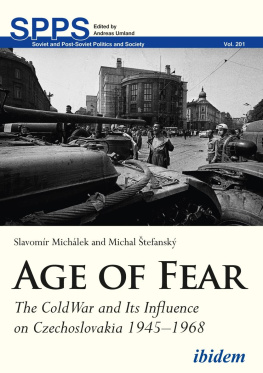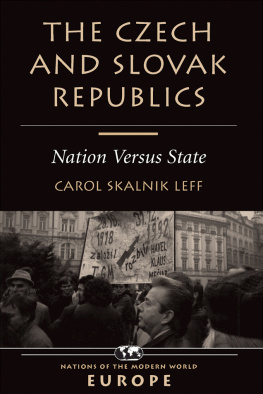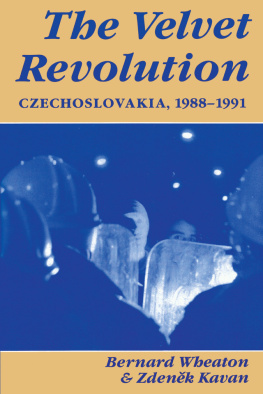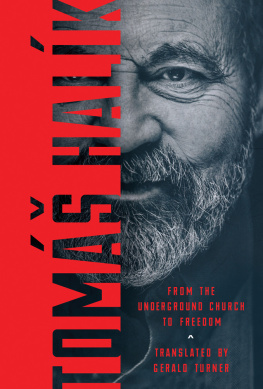CZECHOSLOVAKIA
M ARY H EIMANN , an established scholar in the field of English Catholic history, first became interested in the case of Czechoslovakia as a teaching experiment, a way of bringing twentieth-century international relations alive for her students. She soon became so fascinated that she dropped everything else, learned Czech, and moved to Prague, where she spent two years doing intensive archival research.
Heimann was educated at Vassar College and the University of Oxford and has published widely in the field of religious, cultural and intellectual history. She is Senior Lecturer in History at the University of Strathclyde in Glasgow, where she teaches a mix of English intellectual and European political history.
MARY HEIMANN
CZECHOSLOVAKIA
THE STATE THAT FAILED
YALE UNIVERSITY PRESS | NEW HAVEN AND LONDON
Copyright 2009 Mary Heimann
First printed in paperback 2011
The author and publishers have made every effort to trace the owners of copyright material reproduced in this book. In the event of any omission, please contact the publishers, who will make appropriate restitution in future editions.
All rights reserved. This book may not be reproduced in whole or in part, in any form (beyond that copying permitted by Sections 107 and 108 of the U.S. Copyright Law and except by reviewers for the public press) without written permission from the publishers.
For information about this and other Yale University Press publications, please contact:
U.S. Office:
Set in TT Garamond by IDSUK (DataConnection) Ltd.
Printed in Great Britain by MPG Books Group, Bodmin, Cornwall
Library of Congress Cataloging-in-Publication Data
Heimann, Mary.
Czechoslovakia: the state that failed / Mary Heimann.
p. cm.
Includes bibliographical references and index.
ISBN 978-0-300-14147-4 (ci: alk. paper)
1. CzechoslovakiaHistory20th century. 2. CzechoslovakiaPolitics and government20th century. 3. CzechoslovakiaHistoryAutonomy and independence movements. 4. Ethnic relationsCzechoslovakiaHistory20th century. 5. NationalismCzechoslovakiaHistory20th century. I. Title.
DD901.B78.H465 2009
943.7032dc22
2009021977
A catalogue record for this book is available from the British Library.
ISBN 978-0-300-17242-3
10 9 8 7 6 5 4 3 2
For my son Michael and in memory of my father, John P. Heimann
CONTENTS
ILLUSTRATIONS AND MAPS

Picture section
1. Edvard Bene at Versailles, 7 May 1919 (reproduced from F.X. S lda, Dr. Edvard Bene ve fotografii, 1947)
lda, Dr. Edvard Bene ve fotografii, 1947)
2. President T.G. Masaryk and Foreign Minister Edvard Bene in the 1920s (Semencov/reproduced from J. Hor c & K.
c & K.  apek, Masaryk ve fotografii, 1932)
apek, Masaryk ve fotografii, 1932)
3. Hitler at Prague Castle, 16 March 1939 (De Agostini/Superstock Images)
4. South view of Hodonn labour camp in Moravia, 1942 (Old ich Ku
ich Ku era/reproduced from C. Ne
era/reproduced from C. Ne as, The Holocaust of Czech Roma, 1999)
as, The Holocaust of Czech Roma, 1999)
5. Germans waiting to be deported from Prague, May 1945 ( esk tiskov kancel
esk tiskov kancel )
)
6. Hlinka Guard assembling Jews in Michalovce for deportation from Slovakia, (reproduced from E. Mannov (ed.), A Concise History of Slovakia, 2000)
7. President Edvard Bene signing a decree to nationalize industry, 24 October 1945 (reproduced from  eskoslovensk sttnk Klement Gottwald, 1947)
eskoslovensk sttnk Klement Gottwald, 1947)
8. Czechoslovak Communist Party leader Klement Gottwald speaking at the Old Town Square in Prague, 21 February 1948 (reproduced from V. Kopeck, Klement Gottwald, 1954)
9. Anniversary of the Slovak National Uprising being celebrated in Zvolen, 29 August 1949 (reproduced from V. Kopeck, Klement Gottwald, 1954)
10. Arrested members of the Jozef Tiso government being taken to Bratislava, 29 October 1945 (Jozef Teslk/Tlac v agentra Slovenskej republiky)
v agentra Slovenskej republiky)
11. Premonstratensian abbot Augustin Machalka testifying at the Czechoslovak State Court in Prague, 31 March 1950 ( esk tiskov kancel
esk tiskov kancel )
)
12. Memorial to President Klement Gottwald in Gottwald Square, Bratislava, 13 October 1982 (Peter imon k/Tla
k/Tla ov agentra Slovenskej republiky)
ov agentra Slovenskej republiky)
13. Tanks on the streets of Prague, 2126 August 1968 (Miroslav Tuleja/reproduced from J. Hochman (ed.), Nad je umr posledn, 1993)
je umr posledn, 1993)
14. The Soviet and Czechoslovak leaderships signing the Protocol on Negotiations between Delegations from the Union of Soviet Socialist Republics and the Czechoslovak Socialist Republic in Moscow, 26 August 1968 ( esk tiskov kancel
esk tiskov kancel )
)
15. Alexander Dub ek speaking on Czechoslovak radio, 27 August 1968 (
ek speaking on Czechoslovak radio, 27 August 1968 ( esk tiskov kancel
esk tiskov kancel )
)
16. Gustv Husk speaking at a meeting of the Slovak Communist Party, 28 August 1968 (Coloman Cch/Tla ov agentra Slovenskej republiky)
ov agentra Slovenskej republiky)
17. President Vclav Havel speaking at the 73rd anniversary celebration of Czechoslovak independence, held in Bratislava, 28 October 1991 ( esk tiskov kancel
esk tiskov kancel )
)
18. Demonstrators and police cordon at Nrodn t da in Prague, 17 November 1989 (Pavel Hroch/
da in Prague, 17 November 1989 (Pavel Hroch/ esk tiskov kancel
esk tiskov kancel )
)
Maps
Central Europe: Dominant ethnolinguistic groups, c. 1930
The First Czechoslovak Republic, 192038
Czecho-Slovakia: border changes, 19389
The Czechoslovak Socialist Republic, 196068
ACKNOWLEDGEMENTS
I would like to express my grateful thanks to Hsi-Huey Liang of Vassar College, who first sparked my interest in the history of Czechoslovakia; to the history students at the University of Strathclyde whose enthusiasm and curiosity helped to sustain it; and to Tony Morris, who first suggested a book on the subject.
Next page










 lda, Dr. Edvard Bene ve fotografii, 1947)
lda, Dr. Edvard Bene ve fotografii, 1947) c & K.
c & K.  apek, Masaryk ve fotografii, 1932)
apek, Masaryk ve fotografii, 1932) ich Ku
ich Ku era/reproduced from C. Ne
era/reproduced from C. Ne